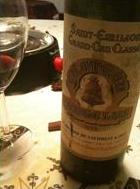This September saw the reclassification of the top châteaux of Saint-Émilion. The headline news was the promotion of Pavie and Angélus into the top category of Premiérs Grands Crus Classés ‘A’, joining Cheval Blanc and Ausone as the appellation’s equivalents of ‘First Growths’. Pavie owner Gérard Perse said he was ‘overcome with emotion’ at the decision. He added:
‘I’m very happy and proud to have invested in an appellation as courageous as Saint-Émilion, which submits itself to this 10-yearly classification.’
Also among those celebrating promotion were Château Valandraud, Château Canon-La-Gaffelière and Château Larcis-Ducasse, all promoted to Premiérs Grands Crus Classés ‘B’ status.
Over two hundred Saint-Émilion wines carry the description “Grand Cru”, however this designation is awarded under the basic appellation rules and is not part of the formal classification. Wines in this category are not seen as being of comparable quality to the Grands Crus Classés.
The classification is divided as follows:
• Premiers Grands Crus Classés ‘A’
• Premiers Grands Crus Classés ‘B’
• Grands Crus Classés
Let’s look back at the history. In 1955 the wines of Saint-Émilion were classified. Unlike the Classification of 1855 covering wines from the Médoc (plus one from Graves), the Saint-Émilion list is updated every 10 years or so. Following that first classification the list was updated in 1969, 1986, 1996 and most controversially in 2006. The 2006 classification was declared invalid following a series of legal actions by frustrated estates, and the 1996 version of the classification was reinstated for the vintages from 2006 to 2009.
On 1st July 2008 a French Court ruled that the wine tasting mechanism used in the 2006 classification was not impartial, thus again making the entire classification invalid.
 Jean-Francois Quenin (pictured) is the president of the Conseil des Vins de Saint-Émilion, and owner of Château de Pressac (promoted from Grand Cru to Grand Cru Classé). He commented that this was part of a process that aimed to restore the reputation of the system after it had been dragged through the mire. He said:
Jean-Francois Quenin (pictured) is the president of the Conseil des Vins de Saint-Émilion, and owner of Château de Pressac (promoted from Grand Cru to Grand Cru Classé). He commented that this was part of a process that aimed to restore the reputation of the system after it had been dragged through the mire. He said:
‘Some people thought we were never going to get here. I became president in 2008, two years after the last classification began to suffer its legal challenges. I imagine there will be some disappointments, but the idea of classification allows everyone to have hope that if they work hard, they will be rewarded.’
Stéphanie de Bouard-Rivoal of Angélus praised her father, owner Hubert de Bouard, and her uncle Jean-Bernard Grenié for their hard work in gaining the vineyard’s promotion.
 But what of the losers? Because of the controversy in 2006, any châteaux which were due to lose their classification or which had incomplete applications were invited to begin a consultation process with the regulatory body the Institut National des Appellations d’Origine (INAO), with the possibility of retaining their status. Does this mean that the whole system is going to be devalued if everyone is as good as everyone else?
But what of the losers? Because of the controversy in 2006, any châteaux which were due to lose their classification or which had incomplete applications were invited to begin a consultation process with the regulatory body the Institut National des Appellations d’Origine (INAO), with the possibility of retaining their status. Does this mean that the whole system is going to be devalued if everyone is as good as everyone else?
Nevertheless, eleven properties were demoted in the reclassification and several hopeful châteaux were denied promotion, leading to some disquiet. Pierre Carle of Châteaux Croque Michotte, denied grand cru classé status, has been the most vocal critic thus far, complaining about the judging process in a press conference at his property. Once the French Ministries of Agriculture and Finance sign off on the classification it seems Carle could well lead a legal challenge. The spectre of the court wrangling in 2006 looms large and the wine industry is watching with interest.
It seems, though, that the 2012 Classification is probably robust enough to withstand challenges such as Carle’s and efforts will undoubtedly be made to avoid the ignominy of another collapse. Market-watchers will be keen to see the longer-term effects of Saint-Émilion’s new order.
